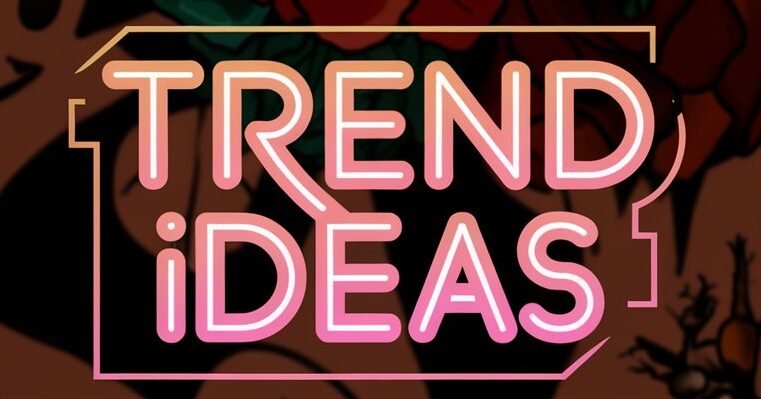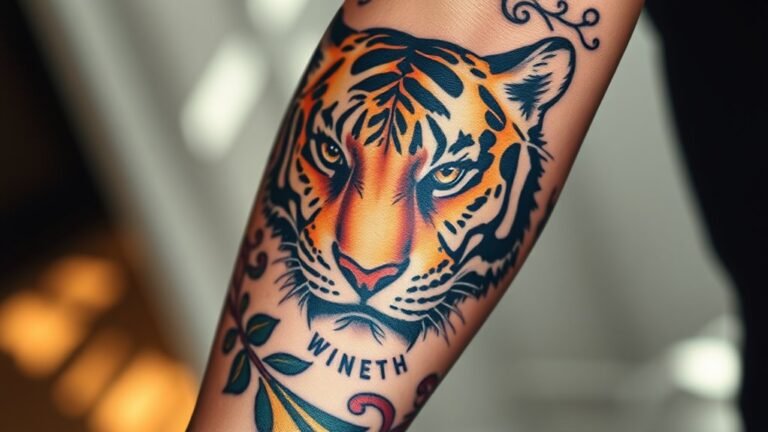Teardrop Tattoo Meaning and Symbolism
When you think about teardrop tattoos, what comes to mind? For many, they evoke images of sorrow and loss, but their meanings are far more complex. These symbols can represent resilience and survival, intertwining personal narratives with cultural significance. Each tattoo tells a story, shaped by its wearer's experiences. As you explore the layers of symbolism behind these inked tears, you may uncover surprising truths about identity and transformation.
In a Nutshell
- Teardrop tattoos often symbolize personal loss, mourning, or significant emotional experiences, connecting wearers to their past and broader communities.
- In gang culture, these tattoos signify loyalty, resilience, and the hardships endured, serving as a badge of honor.
- The meaning of teardrop tattoos can vary culturally, representing mourning in some Indigenous communities and resilience in parts of South America.
- Beyond negative stereotypes, teardrop tattoos can also symbolize personal empowerment, transformation, and artistic expression.
- Placement, color, and context of teardrop tattoos can shift their meanings, reflecting individual stories of survival and strength.
Historical Origins of Teardrop Tattoos
Teardrop tattoos, while often associated with specific cultural meanings today, have a rich history that stretches back decades, intertwining with various subcultures and criminal affiliations.
Their historical significance lies in their evolution from symbols of mourning and loss to marks of survival and identity. You'll find that these tattoos emerged primarily in the prison system, representing a narrative of hardship and resilience.
As you explore their origins, you'll notice how they've adapted over time, reflecting the struggles and triumphs of those who wear them. Each teardrop tells a story, connecting you to a broader community of individuals who understand pain, loyalty, and the quest for belonging.
In this way, teardrop tattoos transcend mere ink, becoming powerful symbols of personal journeys.
Common Interpretations of Teardrop Tattoos
While many people associate teardrop tattoos with crime and loss, their meanings can vary considerably depending on the context in which they're worn. For some, it's a powerful form of emotional expression, capturing profound sorrow or the weight of personal experiences.
Others view it as an artistic interpretation of resilience, symbolizing survival and strength in the face of adversity. The placement and color can also shift its meaning; a tear near the eye might represent personal tragedy, while a colored teardrop can signify hope or healing.
Ultimately, whether you wear it as a badge of honor, a reminder of the past, or a means of connection, the teardrop tattoo invites a deep exploration of identity and experience.
Cultural Variations in Teardrop Tattoo Meanings
Although the teardrop tattoo often evokes thoughts of crime and personal loss in some cultures, its significance can shift dramatically across different societies.
In certain Indigenous communities, for instance, the tattoo symbolizes mourning and remembrance, honoring lost loved ones and conveying deep emotional connections.
Meanwhile, in parts of South America, it may represent resilience and survival, a badge of courage worn with pride.
These regional variations highlight the tattoo's rich cultural significance, transforming it from a mark of sorrow into a symbol of strength and identity.
Understanding these diverse interpretations fosters a sense of belonging, reminding you that tattoos often carry stories uniquely relevant to individual experiences and communal histories.
Embrace these perspectives to appreciate the teardrop tattoo's multifaceted meanings.
The Teardrop Tattoo in Gang Culture
When you explore gang culture, the teardrop tattoo often emerges as a powerful symbol of loss and criminal affiliation. For many, it signifies the weight of an experience—perhaps a life taken or a friend lost.
In prison culture, this ink can serve as a badge of honor, marking one's commitment to the gang and the hardships endured. If you see someone with a teardrop, understand it might tell a story of survival or a reminder of the past.
This tattoo isn't just art; it's a connection to a world that demands loyalty and resilience. For those seeking belonging, wearing it can signify acceptance within a tight-knit community, reflecting both pain and pride in equal measure.
Personal Stories Behind Teardrop Tattoos
Many individuals who choose to get a teardrop tattoo carry with them deeply personal stories that often remain hidden beneath the surface. For some, it represents a lost loved one, a poignant reminder of grief that echoes in their heart.
Others wear it as a tribute to their personal experiences, symbolizing survival in the face of adversity. The emotional significance of these tattoos transcends mere ink; they become a canvas of life's struggles and triumphs.
Each teardrop tells a story, inviting connection and understanding from those who see it. In a world where everyone craves belonging, these tattoos can foster conversations, bridging gaps between strangers who share similar paths of pain and resilience.
The Role of Teardrop Tattoos in the Criminal Justice System
Teardrop tattoos often serve as powerful symbols within the criminal justice system, conveying messages that go beyond mere aesthetics. For many individuals, these prison tattoos represent loss, mourning, or even a rite of passage within a gang culture.
Law enforcement uses these tattoos as identifiers, often linking them to specific criminal histories or affiliations. When you see a teardrop, it's not just ink; it's a story about survival, regret, or a past that's hard to escape.
These tattoos can instill fear or respect, shaping how you view the person wearing them. Understanding their significance can foster a deeper awareness of the complex narratives woven into the lives of those marked by such symbols, offering insight into their struggles and experiences.
Teardrop Tattoos in Popular Culture
While teardrop tattoos carry significant meanings within the criminal justice system, they've also made their way into popular culture, taking on new dimensions along the way.
You'll find these tattoos featured in music videos, movies, and artwork, often representing a blend of rebellion and vulnerability. Artists like Lil Wayne and many others have sported teardrop tattoos, turning them into symbols of street credibility and emotional depth.
This transformation creates a sense of belonging among fans who relate to the stories behind these inked droplets. In pop culture, teardrop tattoos invite conversations about loss, love, and survival, allowing you to connect with others who share similar experiences.
As a result, these tattoos have evolved into powerful expressions of identity.
Getting a Teardrop Tattoo: Considerations and Symbolism
Before you decide to get a teardrop tattoo, it's crucial to understand its rich symbolism and the weight it carries in various contexts. This design choice isn't just about aesthetics; it often conveys deep emotional impact.
Consider how the placement and size of your tattoo can reflect your personal journey. A small teardrop near your eye might signify loss or regret, while a larger design could symbolize resilience or growth.
Think about the colors you want to incorporate, as they can alter the message conveyed. Ultimately, this tattoo can foster a sense of belonging, connecting you to shared experiences or communities.
Before committing, reflect on the story you want your teardrop to tell, ensuring it resonates with your identity.
Moving Beyond the Stereotypes of Teardrop Tattoos
Although often linked to negative connotations like crime or mourning, teardrop tattoos can represent a much broader spectrum of meanings that challenge these stereotypes.
You might find that these tattoos serve as a canvas for personal empowerment and artistic expression, allowing individuals to reclaim their narratives.
Consider the diverse interpretations:
- A tribute to lost loved ones
- A symbol of resilience and survival
- An emblem of personal transformation
- A reminder of lessons learned
- A statement of individuality
Frequently Asked Questions
Are Teardrop Tattoos Only Associated With Criminal Behavior?
Teardrop tattoos aren't solely tied to criminal associations; they reflect complex cultural perceptions. You might find these tattoos symbolize grief or loss for some, revealing diverse meanings beyond their notorious reputation. It's all about personal interpretation.
Can Teardrop Tattoos Have Positive Meanings?
Absolutely, teardrop tattoos can symbolize a healing journey. They often represent personal loss and resilience, reminding you of your strength and growth through adversity, fostering a sense of belonging among those who share similar experiences.
How Do Different Colors Affect Teardrop Tattoo Meanings?
Different colors in tattoo design can convey unique messages. For instance, blue might symbolize sadness, while red can signify love or passion. Understanding color symbolism helps you express personal stories and feelings through your ink.
What Should I Consider Before Getting a Teardrop Tattoo?
Before getting a teardrop tattoo, consider your pain tolerance and the personal significance it holds. Reflect on its impact on your identity, how it aligns with your values, and whether it truly resonates with your journey.
Do Teardrop Tattoos Have Different Meanings in Different Countries?
Yes, teardrop tattoos carry diverse meanings across cultures. You'll find regional variations reflecting unique histories and symbolism. Understanding this cultural significance helps you connect more deeply with your tattoo and the stories it represents.







